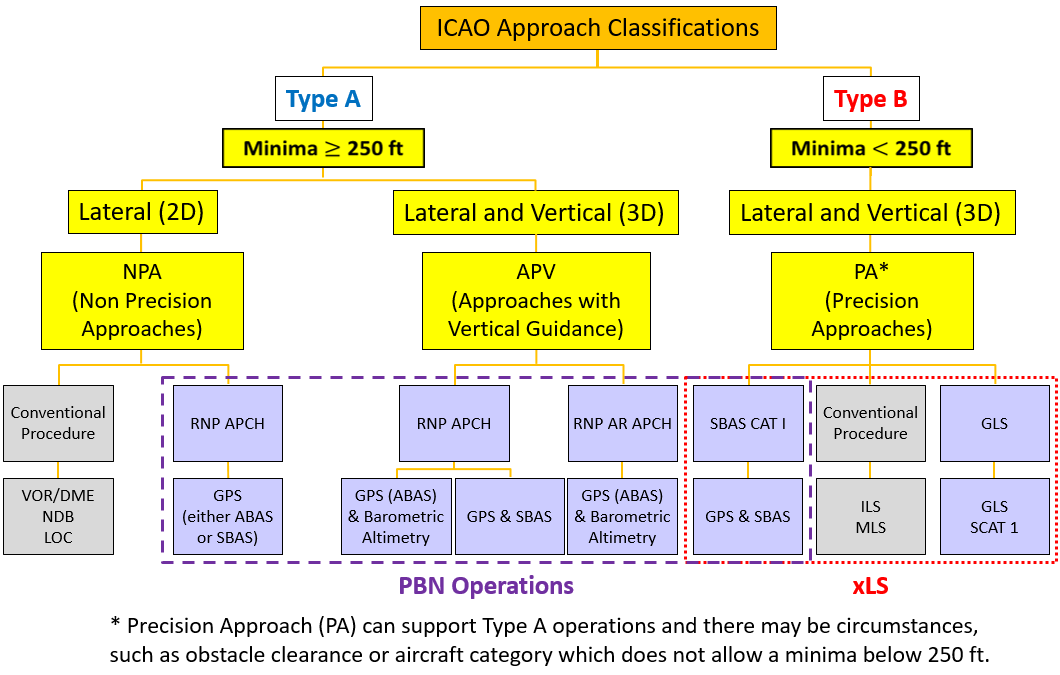ICAO Approach Classifications
ICAO approach classifications
Instrument licences are divided between 2D and 3D IAP endorsements, and there are cases where pilots do not have access to a 2D IAP, or in some remote areas have no access to 3D IAP.
2D IAP are divided between:
- Lateral guidance with Course Deviation Indicator, and
- Azimuth Guidance via a relative bearing indicator.
An instrument rating initial issue must test a 2D IAP [1] [2].
2D IAP covers:
- NDB
- VOR and LOC [note 1]
- DGA (DME/GNSS arrival)
- RNAV GNSS LNAV (RNP LNAV) or RNAV GNSS LP (RNP-LP)
3D IAO covers:
- Precision: ILS with LOC and GS
3D does not cover:
- RNAV GNSS VNAV [note 2]
recency
Recency requirements to conduct an IAP:
- 3D IAP - a 3D approach must have conducted in last 90 days
- 2D IAP - lateral, a 2D lateral approach must have conducted in last 90 days
- Azimuth IAP - an Azimuth approach must have been conducted in the last 90 days
IFR takeoff minima
- 300 feet for single-engine IFR
Forecast
- A TAF is a forecast of expected conditions at an aerdrome with 5 miles of the Aerodrome Reference Point <ref.http://www.bom.gov.au/aviation/data/education/awp-taf.pdf</ref>
- A TEMPO is a forecast of weather change that may occur betweeen 30 minutes and kess than 60 minutes - i.e. its buffer is 60 minutes.
- An INTER is a forecast of weather change that may occur between 30 minute or less.
When the TEMPO and INTER is over the weather reverts to the previous conditions of forecast (in a TAF) after the buffer period.
- A BECMING in a forecast is a permanent expected change in the weather within 2 hours and not more than 4 hours.
- PROB is only used for Thunder Storms
An Operational Requirement to divert or hold occurs when airport arrival overhead is within 30 minutes before the weather is forecast as bad, or 30 minutes after the weather is forecast as good. (one applies buffers of INTER and TEMPO to the BCMNG)
- when Thunderstorms are predicted in the TAF and arrival time falls within the buffer of 30 mins
notes
- ↑ If you have shown competency conducting VOR approaches, CASA considers you skilled enough to conduct LOC approaches. A LOC approach is flown with reference to the VOR when the ILS GS signal fails (and the NAV is switched back to the VOR frequency).
- ↑ Even if your aircraft system displays GS, due to advisory limitations and the lack of IAP minimas published in Australian a VNAV / LVP approach must be flown to 2D minimas and does not satisfy the requirements of demonstrating a 3D approach.

